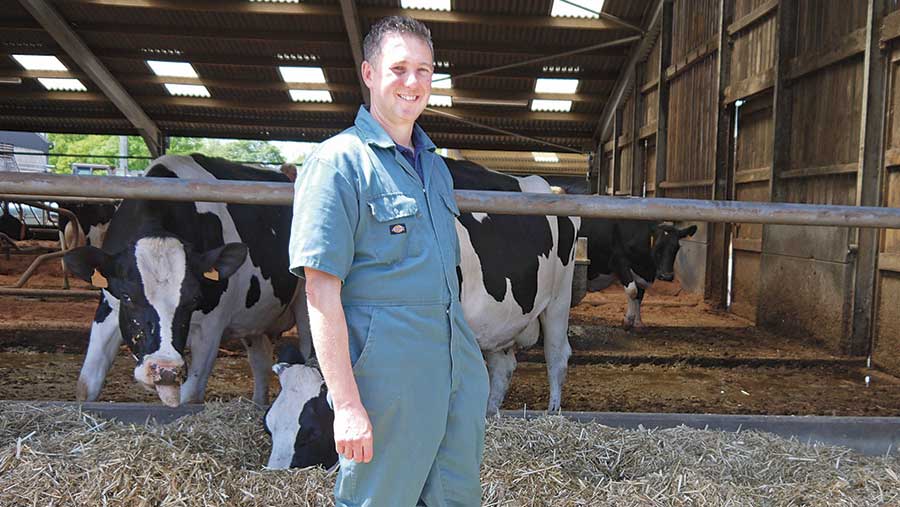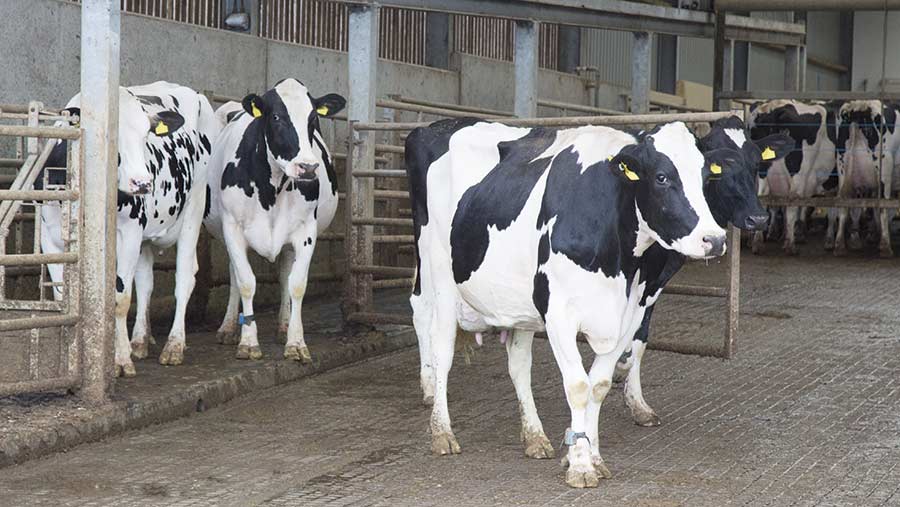5 tips for mobility scoring on dairy farms
Lameness remains one of the main challenges facing dairy herds, with the autumn months seeing an increase in prevalence for some, due to increased standing time on concrete floors.
Prevention is always better than cure, and mobility scoring plays a critical role in monitoring cows, allowing farmers to promptly identify those that need treating, which has been proven to decrease the likelihood of the cow becoming lame again.
Cattle health expert, Owen Atkinson, gives his top five tips to successful mobility scoring.

Owen Atkinson
See also: 4 ways to improve cow flow and reduce lameness
1. Make sure you are trained
Whether you’ve been farming for 50 years or are fresh out of college, you can’t presume you know how to mobility score unless you are properly trained.
To prevent severe lameness cases by treating those cows who are starting to become lame in the early stages, you need to be able to confidently use the AHDB mobility scoring 0, 1, 2, 3 scale.
Training provides you with a good understanding of the scale, so it can be implemented correctly.
It’s common for farmers, vets, and foot-trimmers to be able to identify the “hopping lame” cows, that are score 3, but more often than not, I find there’s confusion between score 2 and 3 cows, and what a score 1 case actually looks like.
This differentiation is vital if you want to get on top of the issue in your herd, and implement early, effective treatment.
Look out for local mobility scoring training. I always advocate all those working with the cows take part, so you are all on the same page when it comes to identifying the level of lameness on-farm.
2. Use an independent mobility scorer occasionally
When you’re working with your cows every day, it’s often difficult to be able to notice minor changes to the level of lameness in each individual case.
The use of an independent scorer from time to time offers a fresh set of eyes, and they’re often more critical to lameness incidences than you may be with your own cows.
It’s a useful refresher, and allows you to recalibrate your own scoring, so that you can look to prevent cases in the future.
3. Allow cows to walk at their own speed

© Tim Scrivener
Farmers often ask about when the best time to mobility score is, or say that they don’t have the time to incorporate it into their weekly routine.
To accurately score, cows need to be walking at their own pace, so the best time to do so is often when they are entering or leaving the parlour, or walking back up the tracks to the fields.
This way, the scoring can become part of the milking routine. Dedicating time to mobility scoring is similar to how many herds heat detect.
4. Ensure scoring is done frequently
Mobility scoring should be done regularly all year. To detect new mild cases, it’s important to score every two weeks so that effective treatment can be promptly given.
Then, every three to six months, aim to have an independent scorer monitor the whole herd so that you can make sure you’re capturing and monitoring all score 2 and 3 cases.
5. Treatment
It’s important you have the resources available on-farm to promptly treat all lameness cases, as it’s proven to reduce the number of reoccurring incidences.
This is known as effective detection, prompt effective treatment or Edpet.
Make sure you have the facilities to be able to pick up cow’s feet to treat. A good cattle crush should mean it takes one person one minute to get one cow into the crush to safely pick up the hoof to see the root cause of the lameness.
If the case is digital dermatitis, thorough cleaning of the lesion and application of antibacterial spray is generally the recommended treatment, along with regular foot-bathing for control.
For claw horn lesions, research indicates that administering a course of ketoprofen injections, along with corrective trimming of the hoof and application of a hoof block, can significantly increase recovery rates and reduce the chances of the cow becoming lame again in the future.
It’s important to then record the treatment and score of each cow, so that you can monitor cases to see the treatment and your lameness control measures are working.
